Debating value
You don’t hear many people arguing against the concept of value-based healthcare. Decisions should take into account quality, measured in outcomes and patient experience, and cost. Value means questioning how patients are treated in particular ways and asking if a different approach could produce better outcomes and reduced costs. But despite this widespread backing for the principles, only small numbers of UK healthcare bodies have actually put value-based healthcare into routine practice.
An HFMA roundtable in December, supported by medical technology company Getinge, set out to explore progress in moving towards value-based healthcare.
Specifically, the invited finance directors and senior leaders from providers and commissioners wanted to identify the essential building blocks that need to be in place, and the obstacles that need to be overcome, if a value-based approach is to be successful.
Clinical variation
Costs form the denominator of the value equation and so cost data is key to value-based assessments. It can provide a way to highlight variation in clinical practice, which can lead to pathway improvements that improve outcomes and reduce costs. But clinicians, finance directors and boards all need to engage with this approach, recognising it as a useful way to drive improvement.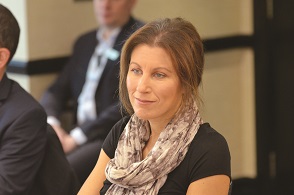
While there are examples of clinicians engaging with cost and outcome data, more clinical champions are needed. And the roundtable agreed that the language used was crucial to their engagement in the value agenda. ‘It is about variation in clinical pathways not variation in costs,’ said Susan Rollason (pictured), director of finance and strategy at University Hospitals of Coventry and Warwickshire NHS Trust (UHCW). ‘When you look at it like this, you can engage clinicians. They are interested in what value you can get when you vary the pathway – what the different outcomes might be,’ she said. ‘If you can focus on variation in clinical practice, that allows you to start a discussion. The cost data merely gives you a way in.’
The starting point with clinicians in the UHCW prostate cancer service was to focus purely on outcome data, establishing robust data and looking at the variation in outcomes to start understanding the value being delivered. Just looking at links between different pathways and outcomes really engaged clinicians, who were keen to improve performance against national access standards.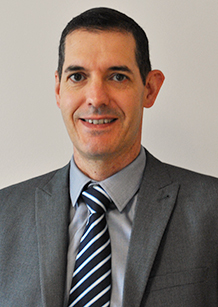
Ian Moston (pictured), Salford Royal NHS Foundation Trust’s director of finance, agreed with the need for a common language. ‘Costing won’t get anyone excited,’ he said. ‘We found better engagement where you can see variation in clinical indicators. Understand that variation and then look at the associated cost. You need to find a different lens than the cost.’
He encouraged organisations to see value as a long-term piece of work. ‘If it is about making a single decision, there will be no engagement,’ said Mr Moston. ‘It has to become the way we do business.’ He compared it with the way the NHS engaged with risk management a decade or so ago. ‘We don’t hold the risk register separately, we embedded risk in how we operate. The same has to be true for value.’
Catherine Phillips (pictured), finance director of North Bristol NHS Trust, underlined clinicians’ focus on quality and safety. While variation in costs might help identify variation in length of stay, for example, clinicians were interested in the link between length of stay and outcomes, not the costs per se. But she warned that the current financial environment in the NHS made clinical engagement more difficult. Clinicians were more likely to see value as a cost-cutting exercise.
‘There needs to be some trust,’ she said. ‘And that’s a real leadership challenge. We need to approach value while not focusing specifically on the financial imperative.’
That might mean not looking at value as part of a traditional cost improvement programme with target savings identified up front. Instead, it means starting a value approach to enhance understanding about outcomes and costs – even if this subsequently, as evidence suggests, leads to downstream cost savings through appropriate standardisation.
Duncan Orme (pictured), operational director of finance at Nottingham University Hospitals NHS Trust, agreed that NHS bodies were in a tough position, made more difficult by the increasing command and control nature of regulation. Spending less money is now a fundamental requirement, but he said that clinical solutions to find best value can require more imagination. Improvement work at the trust in plastic surgery had taken the service from a £3m loss on turnover of £12m to profit within three years.
‘But to do this we had to make investments to get best value, including putting two surgeons on the rota for complex lists,’ he said. Doubling up on your most expensive resource may have increased overall direct costs, but it led to significantly better value.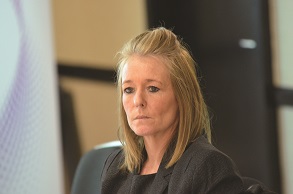
Karen McDowell (pictured), chief finance officer of Surrey Heartlands Clinical Commissioning Groups (Guildford and Waverley CCG, North West Surrey CCG and Surrey Downs CCG), said value had to look across sectoral divides – looking at pathways that move from acute settings to primary and community care settings. So a value project in an acute hospital should also involve primary care clinicians and vice versa.
But she agreed the key focus should be on the benefits to patients – and ensuring that the outcomes measured and monitored were the ones that were important to patients.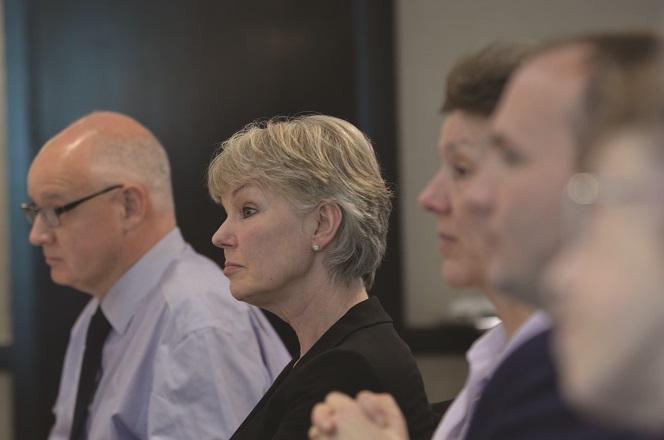
Caz Sayer (pictured), GP and former chair of Camden Clinical Commissioning Group, which has been pursuing value-based commissioning for a number of years, also stressed the importance of a system-wide approach. But she suggested that it was difficult for primary care to release clinicians to get involved in these projects.
In general, she said, for value to be successful, people needed to be given the time to get involved – expecting them to engage around value improvement in addition to existing workload was unrealistic.
Given clinicians’ time constraints, she said data also had to be in the right format. ‘It is vital that it tells stories that relate back to outcomes and patient experience,’ Ms Sayer said. She called on finance directors to be ‘as excited about changes in clinical models’ as they are about improving cost performance. ‘We need to think about what is important to patients as people – not think of them as conditions.’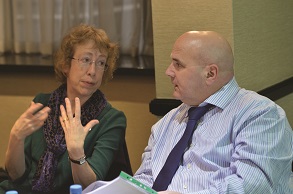
While most of the discussion centred on engaging clinicians, John Graham (pictured) said that finance directors also needed to engage. The finance director of Royal Liverpool and Broadgreen University Hospitals NHS Trust said it could not be taken for granted that all finance directors were signed up to value – they ranged from fully engaged to seeing the value approach as something that won’t help them meet control totals in the short term.
He also underlined the importance of seeing value as a new way of working – and not a short-term fix. The organisations that have been successful have been at it for a long time, he said, starting with establishing robust outcome and cost data and then using this to analyse variation. He added that training would be important to the engagement challenge. ‘We need to find ways to help senior clinicians and nursing staff become more literate in data so that they can understand what they are reading and feel able to challenge it where appropriate,’ he said.
Key components
The attendees were asked to identify the key components that should be present for value-based healthcare. Dr Sayer said value partnerships had to be in place across whole systems and there needed to be common values across the various organisations within the system. And ideally this should be across broader public services not just healthcare.
She highlighted the difficulties of ‘losing’ young mental health service users in the transition to adult services – with these people often reappearing in the system later with more severe problems that would potentially cost more to address. By taking a systems approach to this problem, there was a potential fourfold return on investment if you also factored in savings from other parts of the public sector, such as the criminal justice system.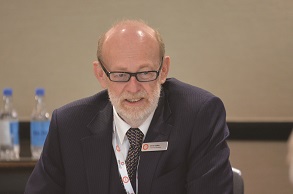
Chris Calkin (pictured), former HFMA chairman, who was chairing the roundtable, suggested that it was also important to consider how you judged value. Clinicians might view PSA as the core outcome test for prostate cancer treatment but, for the patient, the real measure of a good outcome might be avoiding urinary incontinence.
Dr Sayer agreed. ‘You have to start with the patients. Sit with them and ask what is important to them. You can’t do that with them all at the individual level, but you can at the population level and get them grouped into segments. Once you have patient-defined outcomes, you will find there are very few of them that don’t require you to respond as a system.’
In Camden, where the CCG is using an outcome focused population health approach, the patient’s voice comes through a 1,000-strong citizen’s panel. ‘This has helped us to identify what is not working, define outcomes and design pathways. They’ve also been involved with tendering and monitoring performance.
‘It is not just the right thing to do [involve patients],’ she continued. ‘It is a sound business decision.’ The panel tended to understand the pressures facing the system in a more detailed way and were more likely to share some responsibility for any difficult decisions that had to be made.
Ms Phillips agreed. ‘Value has to be for the patient and this needs to be seen by all the different parts of the system,’ she said. ‘Value for a patient might mean staying in work or being able to stay at home.’ She said there were a lot of people tying up bed days or people simply not coping out in the community. Case management for these individuals was likely to deliver a much better outcome for them and potentially free-up resources. Having identified the desired outcome the challenge was then to get the system aligned so that all organisations played their part.
Ms McDowell picked up on the need for trust within partnerships from earlier discussions. She said that all sustainability and transformation partnerships need to have the necessary trust in place between all organisations in order to make value-based decisions across the whole system.
Examples include the need to ensure that there is agreement of funding flows between providers rather than a focus on the loss of income to individual providers within the system. Ultimately this is about delivering the best pathway for the patients, she said, which might mean transferring activity from acute to community settings.
Mr Graham said there needed to be better risk management across systems, rather than a focus on risk transfer. This was completely tied up with trust and could be delivered through gain and loss sharing mechanisms. ‘The test is when things go wrong and whether people revert to silo behaviour,’ he said. ‘And if things do go wrong, does the system stand behind you.’ He reinforced earlier discussions, suggesting the regulatory system didn’t always support this system approach to risk management.
Mr Moston said he was a firm believer that higher quality often meant lower cost – benefiting from getting things right first time, reducing re-work and eliminating unnecessary or wasteful steps in the pathway. But he said there were occasions when people might accept ‘lower quality for very low costs’. He said you could see the approach in budget airlines, where there was still an absolute expectation of safety and timeliness, but the public consciously traded add-on services for lower prices. The important point was engaging with public and patients so they made informed choices. This could only work in the NHS where ‘savings’ were poured back into other priority services. ‘We don’t take this debate to the public,’ he said.
Data considerations
Data on costs and outcomes were seen as fundamental foundations for value-based decision making, but it needs to be robust and delivered in a timely fashion. Ms McDowell said that trying to have conversations with clinicians with out-of-date information could damage the whole approach.
She said full analysis of the RightCare data packs should be undertaken due to the potential time lag from when the CCG packs are put together and current commissioning arrangements. However, she did state that they were a useful data source to use for both commissioner and provider discussions. Others in the group agreed with this view, emphasising the need for good quality data.
Mr Moston pointed out that Salford’s experience was that the data would only improve by using it, creating a positive loop of identifying and correcting data issues. He added that the trust had made good progress with the use of service line data in the past year – thanks to the rolled-over tariff prices.
‘This has been the easiest year to have conversations with clinicians because the tariff has been stable,’ he said. ‘With tariff fluctuations in the past, they don’t understand how they can improve their costs, but the income drops. So we’ve been able to set up an efficiency programme with constant prices and focus the clinical community above the EBITDA line, with the corporate centre looking below it.’
He added that historical costing practices might mask some of the impact of clinical variation. ‘One consultant might use a particular piece of kit while another doesn’t for the same healthcare resource group. But often the way we allocate costs means that both get a share of the use of the kit,’ he said, meaning that variation in practice wouldn’t be visible through the cost data.
Mr Orme said that costing data in general in the NHS hadn’t been good enough and still needed to improve. It needed to be accurate and at the patient-level – something that NHS Improvement’s Costing Transformation Programme (CTP) aimed to deliver. However, he raised questions about whether the NHS as a whole and provider finance directors locally were making costing improvement enough of a priority. ‘I’m not sure our profession has got the strength and depth to make it better within the given timescales,’ he said.
The 50 or so acute submissions as part of the 2018 voluntary submission within the CTP had ‘stretched professional colleagues and suppliers’, and the next cohort of providers were likely to be less advanced in general in terms of costing. ‘And as we move into mental health and community services, it is likely to be tougher again.
‘As leaders in the profession, how can we encourage a suitable level of investment to get capacity of the service up to be able to answer this in a better way,’ he asked.
Dr Sayer again stressed the importance of looking at whole pathway costs and at outcomes across whole systems – data and metrics that focused just on the organisational level risked decisions that did not make sense in system terms. Mr Graham agreed, but pointed out that organisations still needed to focus on their own data quality as this would provide much of the component data for total pathway costs. This in turn would support better understanding of what was happening across the whole patient journey to deliver the overall system outcomes.
Mr Graham added that while data could improve, in many cases it was already good enough to inform decision-making.
Ms Rollason described the adoption by UHCW of outcome sets developed by the International Consortium for Health Outcomes Measurement (ICHOM). These clinically developed outcome sets pull together clinical outcomes and key survival and disease management metrics with patient reported outcome measures. She said the trust was attracted to them because they were established and the consortium had plans to create pathway outcomes for 80% of the healthcare burden.
Its initial focus has been with the prostate outcome set. A lot of the information was already being collected as part of audit information – though there were problems with data quality. And the trust had also introduced patient questionnaires to meet the PROM requirements. A clinical outcomes portal had ‘really engaged clinicians’ and the trust is now trying to factor in what happened to patients before they came to hospital.
Dr Sayer said that in general coding needed to be taken more seriously and not seen as something solely related to payment. ‘If you are coding wrongly, you are creating a clinical risk.’
Mr Orme said there was a capacity issue similar to that connected with improving costing data. ‘We are not training enough coders and not enough people want to work in this area,’ he said.
Putting it into practice
Participants also discussed how their organisations were putting value-based healthcare into practice. Ms Rollason said the work around prostate cancer at UHCW had produced some good initial benefits in terms of improving data quality and submitting more comprehensive data to national registries. It now plans to start looking at pathway variation, relative treatment options and outcomes. And its data portal is being expanded to cover a broader range of cancer data – including patient-level cost data, outcomes data and clinical audit data.
Ms Rollason said that with infrastructure in place and quality of life information starting to be captured, the ambition was for the reporting tool to support patient decision-making. ‘We want to overlay information about the type of cancer a patient has with the quality of life impacts and the different treatment options available to patients,’ she said.
Salford NHS Foundation Trust has been widely recognised as a leader in terms of high quality and safe services. However, Mr Moston was clear that while the trust had quality and safety embedded in its DNA, it faced the same financial challenges as many other areas with a significant year-on-year cost improvement programme.
It now operated a rolling programme of improvement activities, which involved service change and measuring productivity gains. And it recognised the need to consider pathways outside of the hospital in its improvement work. ‘We’re not an accountable care system as we don’t have primary care fully involved. But we are an integrated care organisation, with adult social care staff now part of our team,’ he said. Stable leadership had helped to sustain progress, he added. ‘This is a long-term approach. You can’t achieve it with a high turnover of leadership.’
Camden CCG is one of the commissioners leading the way on the use of population health management tools to help it target its resources where they are most needed and can be most effective. Analysis has shown that small sections of its population are consuming a significant proportion of resources. In 2014/15 1.2% of Camden’s population had four or more non-elective admissions, representing 20% of the total hospital spend.
The population health management tool identifies segments of population by developing groups based on similar health needs. The aim is to understand what combination of disease and demographic factors drives patients to fit into one of the groups. Services can then be developed to better meet the needs of these population segments.
It has been pursuing a transformation programme informed by this better understanding of population for a number of years, focusing initially on long-term conditions, mental health, frail elderly and children and primary care. More recently, it has entered into a value-based contract for diabetes based around an integrated practice unit model.
Dr Sayer told the roundtable that the approach did work. ‘We brought people together and invested in supporting reduction in the variation in primary care – you can’t reduce hospital activity if you don’t invest in out-of-hospital services,’ she said. ‘In two years, the percentage of people with long-term conditions who felt looked-after improved against the national average, and we’ve reduced non-elective bed usage.
‘The model can deliver and that breeds confidence and trust – and it can be replicated even within the constraints of the current contractual and regulatory framework.’
However, she warned that while Camden had reduced non-elective bed use, it hadn’t been able to take costs out of the hospitals.
‘So, given demographics, it might be more about pegging costs,’ she said.
Investment framework
In Surrey Heartlands, the STP has put value into practice by developing an investment framework that uses the value-based decision process set out by Future-Focused Finance as part of its Best possible value workstream. The framework uses the value equation (defining value as quality divided by costs) throughout to measure the impact of strategic and operational decisions in organisations and local health economies on clinical outcomes, patient experience and safety. The CCG now wants to roll out use of the framework across all its partner organisations.
Nottingham University Hospitals NHS Trust was one of the organisations that took part in the HFMA Costing for Value Institute value challenge pilot. This had set out to test how easy it was in practice to link costs and outcomes at patient level.
The pilot looked at applying the process in two settings: trauma and orthopaedics; and diabetes. While there were challenges – particularly in acquiring comparable outcome data from different sites, the project concluded it was possible to link costs and outcomes in a useful way that can support pathway redesign.
Mr Orme said that, for him personally, the project had identified three clear accelerators of value-based healthcare and improved performance: patient-level information and cost data; good leadership; and clinical leaders.
Overall, there was consensus that trust between clinicians and managers and between organisations was key to making progress on value-based healthcare. And leadership was central to building this trust. There was also agreement that organisations need to understand what patients want from their treatment and this needs to be the focus of the value delivery – rather than health bodies deciding in isolation what counts as successful treatment.
But there was also agreement that while the current financial challenges made progress with value-based healthcare more difficult, it also made it more essential. As such, the current climate provided a major opportunity to change the way decisions are taken to ensure that services make the best possible use of tax-funded health budgets.
Round the table
- Chris Calkin, former HFMA chairman and roundtable chair
- John Graham, finance director, Royal Liverpool and Broadgreen University Hospitals NHS Trust
- Karen McDowell, chief finance officer, Surrey Heartlands Clinical Commissioning Groups
- Catherine Mitchell, head of costing and value, HFMA
- Ian Moston, director of finance, Salford Royal NHS Foundation Trust
- Duncan Orme, operational director of finance, Nottingham University Hospitals NHS Trust
- Catherine Phillips, finance director, North Bristol NHS Trust
- Susan Rollason, director of finance and strategy, University Hospitals of Coventry and Warwickshire NHS Trust
- Caz Sayer, GP and former chair of Camden Clinical Commissioning Group
- In attendance from sponsor Getinge: Tim Bryant, Emilie Erhardt and Louise Hamilton
Clinical forum
A clinical forum on 22 March will bring clinicians together to explore the concept of value in healthcare and their role in putting value-based principles into practice.
The forum is being organised by the HFMA Healthcare Costing for Value Institute in association with the Faculty of Medical Leadership and Management with the aim of encouraging more clinicians to get more involved with the value agenda.
Value-based healthcare is all about maximising the outcomes that matter most to patients at the lowest cost. Clinicians have a huge role to play in identifying the right outcomes. But they are also key to understanding pathway variation and redesigning pathways with cost data providing a way to identify and understand that variation.
‘Value-based healthcare needs to become the focus for clinicians and finance alike as they look to deliver high-quality sustainable healthcare services,’ said Catherine Mitchell, head of the institute. ‘The clinical forum offers a great opportunity for clinical and finance colleagues to start having that conversation.’
Clinicians are encouraged to bring a finance colleague with them, and Healthcare Costing for Value Institute member organisations are eligible for two free places at the forum (one clinical place and one finance place). Clinical staff from non-institute member organisations are also welcome to book onto the event. Click here for details.
Related content
We are excited to bring you a fun packed Eastern Branch Conference in 2025 over three days.
This event is for those that will benefit from an overview of costing in the NHS or those new to costing and will cover why we cost and the processes.